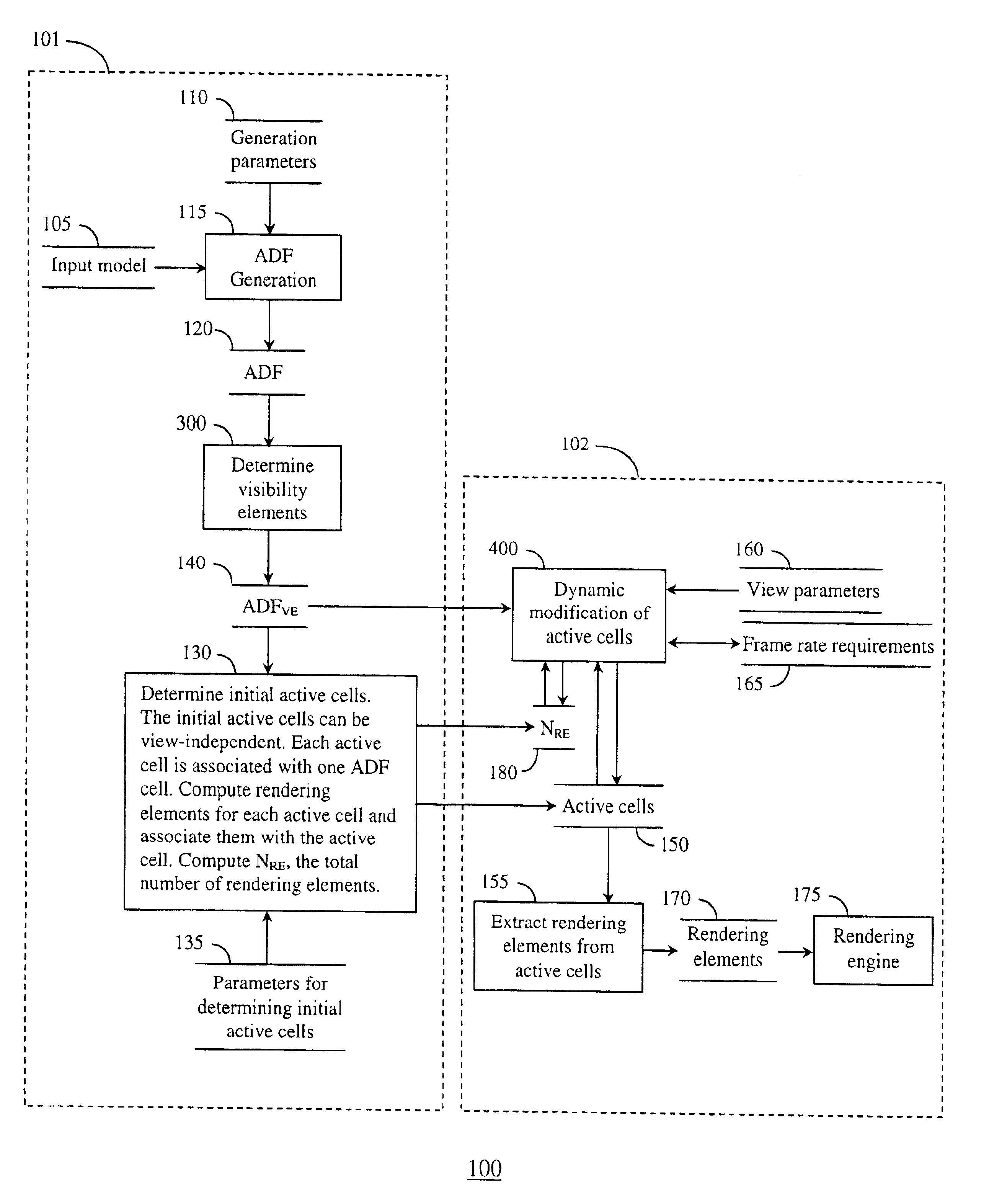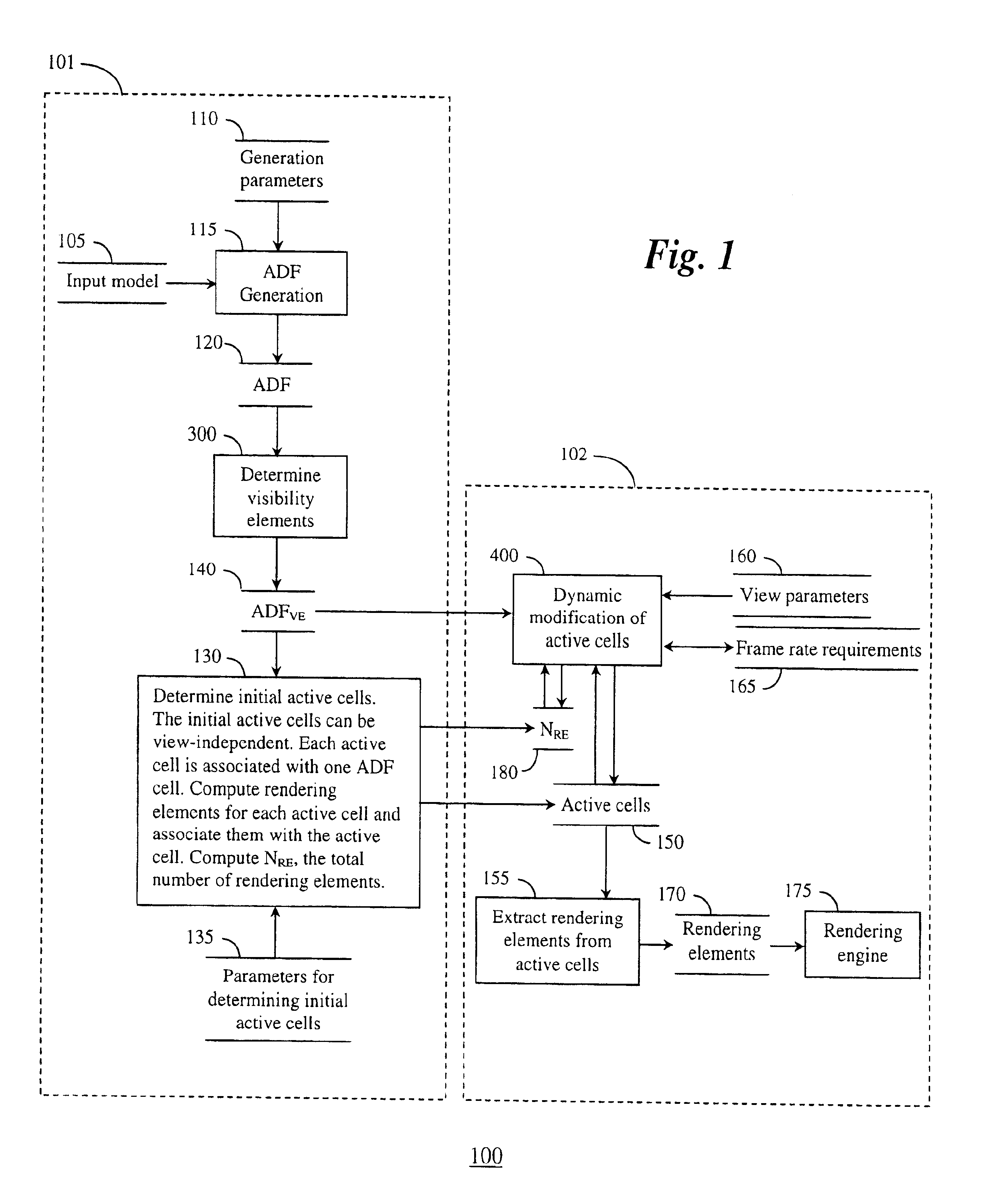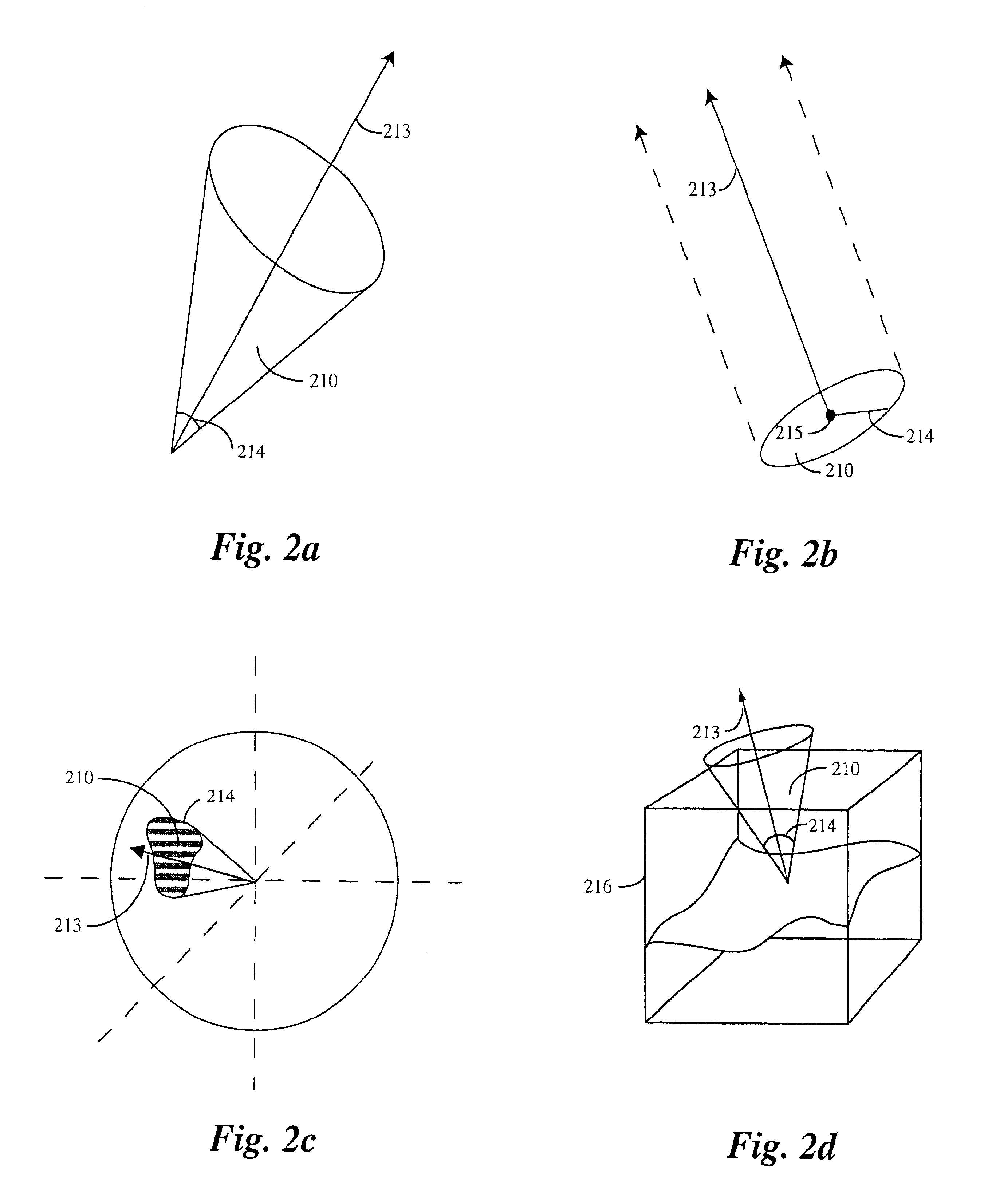Method for generating detail directed visibility elements for a graphics model
a graphics model and visibility element technology, applied in the field of computer graphics, can solve the problems of insufficient polygon production, prohibitively slow for large models, and poor quality models, and achieve the effect of more accurate decisions about visibility
- Summary
- Abstract
- Description
- Claims
- Application Information
AI Technical Summary
Benefits of technology
Problems solved by technology
Method used
Image
Examples
Embodiment Construction
Introduction
FIG. 1 shows a computerized dynamic modeling system and method 100 according to our invention. The modeling system and method 100, as a basis, uses an adaptively sampled distance field (ADF) 120 to represent a digitized model that can be animated, in real-time, for use by the entertainment industry and physical simulations.
The basic data structure of an ADF is described in U.S. patent application Ser. No. 09 / 370,091 “Detail-Directed Distance Fields” filed by Frisken et al. on Aug. 6, 1999, incorporated herein in its entirety by reference.
The ADF 120 can be generated from an input model 105 by a ADF generation method 115 according to generation parameters 110. For example, the generation parameters can specify a level-of-detail, or acceptable error measures. The method 115 adaptively samples distance values in a signed distance field of the model 105, and stores the distance values in a spatial hierarchy of cells, for example a sparse octree of cells. Distance values with...
PUM
 Login to View More
Login to View More Abstract
Description
Claims
Application Information
 Login to View More
Login to View More - R&D
- Intellectual Property
- Life Sciences
- Materials
- Tech Scout
- Unparalleled Data Quality
- Higher Quality Content
- 60% Fewer Hallucinations
Browse by: Latest US Patents, China's latest patents, Technical Efficacy Thesaurus, Application Domain, Technology Topic, Popular Technical Reports.
© 2025 PatSnap. All rights reserved.Legal|Privacy policy|Modern Slavery Act Transparency Statement|Sitemap|About US| Contact US: help@patsnap.com



